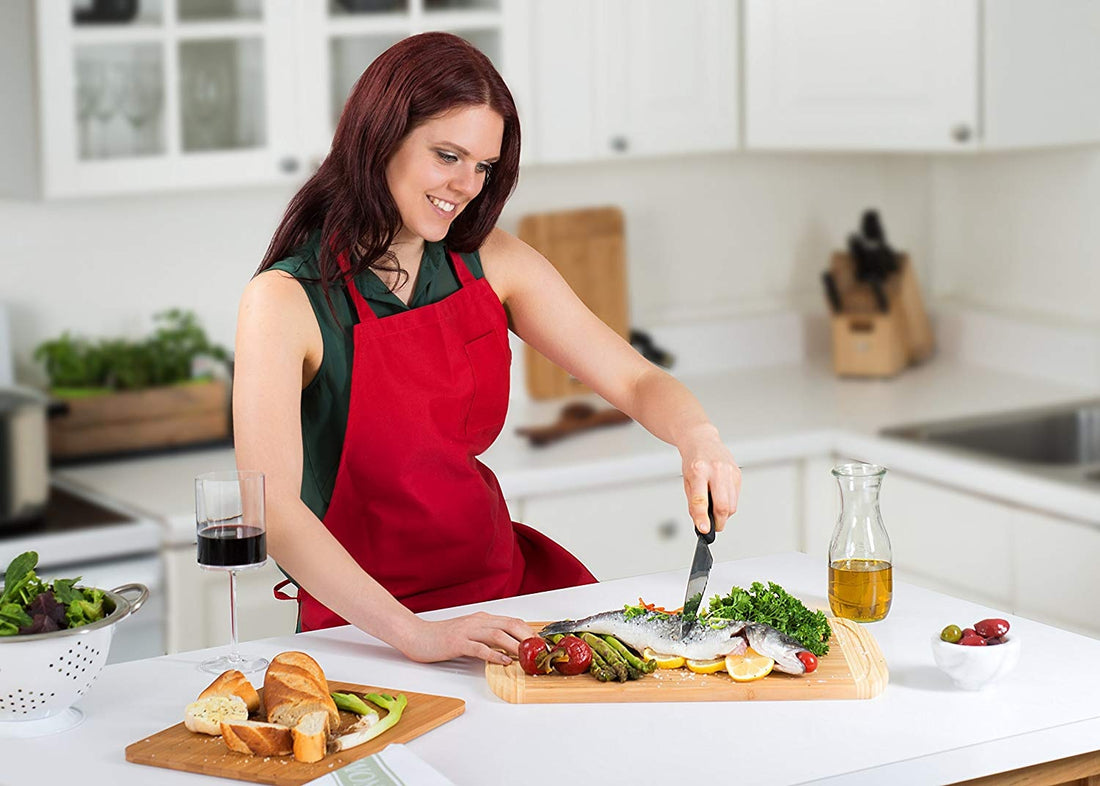
How To Treat A Bamboo Cutting Board
Share
In the kitchen, we have a variety of items – crockery, utensils, pots, pans, and appliances – to assist us in cooking meals. Every item has its own importance. However, when you are missing a cutting board and a knife, it will clearly be very difficult to prepare meals. These are mainstay items that are necessary to have on hand in the kitchen.
A cutting board is made of several metals as well as non-metal materials, such as plastic, silicone, wood, and bamboo. Bamboo is an evergreen grass that is sustainable. They demonstrate high tensile strength and will last for a more extended period in comparison to some of their counterparts.
Being friendly to the environment is a major appeal for the eco-conscious, like you, who are opting for bamboo-made products. It is only logical that bamboo cutting boards would be part of the selection.
Like other items, you need to take care of your bamboo cutting board to ensure it will last for a long time as well as maintain hygienic standards which are important when preparing and cooking your meals. Here are some practical steps to treat your bamboo cutting board:
Proper Cleaning
First of all, you need to clean the bamboo cutting board well, both before and after using it in the preparation of your dishes. The best way to clean the board is to mix lukewarm water and mild soap liquid.
Soak a clean cotton cloth in the lukewarm water/soap mix and rub the soaked cloth on the bamboo cutting board. Use a soft, dry cloth to soak up any extra water from the surface of the cutting board and let it dry naturally. To be certain you have removed any bacteria, pour a tablespoon of bleach in a gallon/bucket of lukewarm water, and apply the mix on the board surface.
Oil Bamboo Cutting Board
To maximize daily use of your bamboo cutting board treat it with oil every 3 weeks. Apply food-grade oil to protect the fibers of the bamboo surface from getting cracked and dry. If you gently rub your bamboo cutting board with food-grade oil before its first usage that will keep the board in good shape for a more extended period.
Wet and Warp
Wetting and warping is a process that helps to reshape the cutting board if it becomes misshapen, which can happen after a long period of use. Fill the sink with warm/hot water and soak your bamboo-made cutting board in the water.
The board should be placed on an entirely flat surface and put a heavy weight that will keep it submerged. Some options to use are brick, stone, or any other waterproof and heavy item that will keep the board soaking in the water for some time to let the board reshape itself.
Keep it Away From Machines
A bamboo cutting board should never be placed in the dishwasher, as the heat and sustained water can cause cracks. Avoid placing any hot pot directly on the surface of the bamboo cutting board. Further, never place it inside the microwave for any reason. A general rule is to keep the cutting board away from any direct heat.
Use Separately
It is best to schedule food preparation time in advance of cooking the meals. If you use your bamboo cutting board to cut several ingredients, like meat, tomatoes, and onions it is important to clean the board between each cutting to prevent bacteria and germs from spreading among the ingredients of your dish, as well as your kitchen surfaces.
Conclusion
To summarize, proper treatment of your bamboo cutting board includes proper cleaning after every use, applying oil on the surface before the first use, wet and warp to reshape it, keep the board away from direct heat, and alternate cleaning between cutting ingredients that can spread bacteria and germs. To assure you are safely using your bamboo cutting board, proper treatment is necessary. By following the methods above you will keep your cutting board in good shape and you will be able to use it for an extended period.

2 comments
Hi there, Glenn! That’s a great question! Our carving boards are very low maintenance and built to last for years to come! While it’s not required to oil your carving board, we do recommend it to promote longevity. We hope this helps! Please reach out if you have any other questions!
Doe I need to oil my Bambusi carving board?